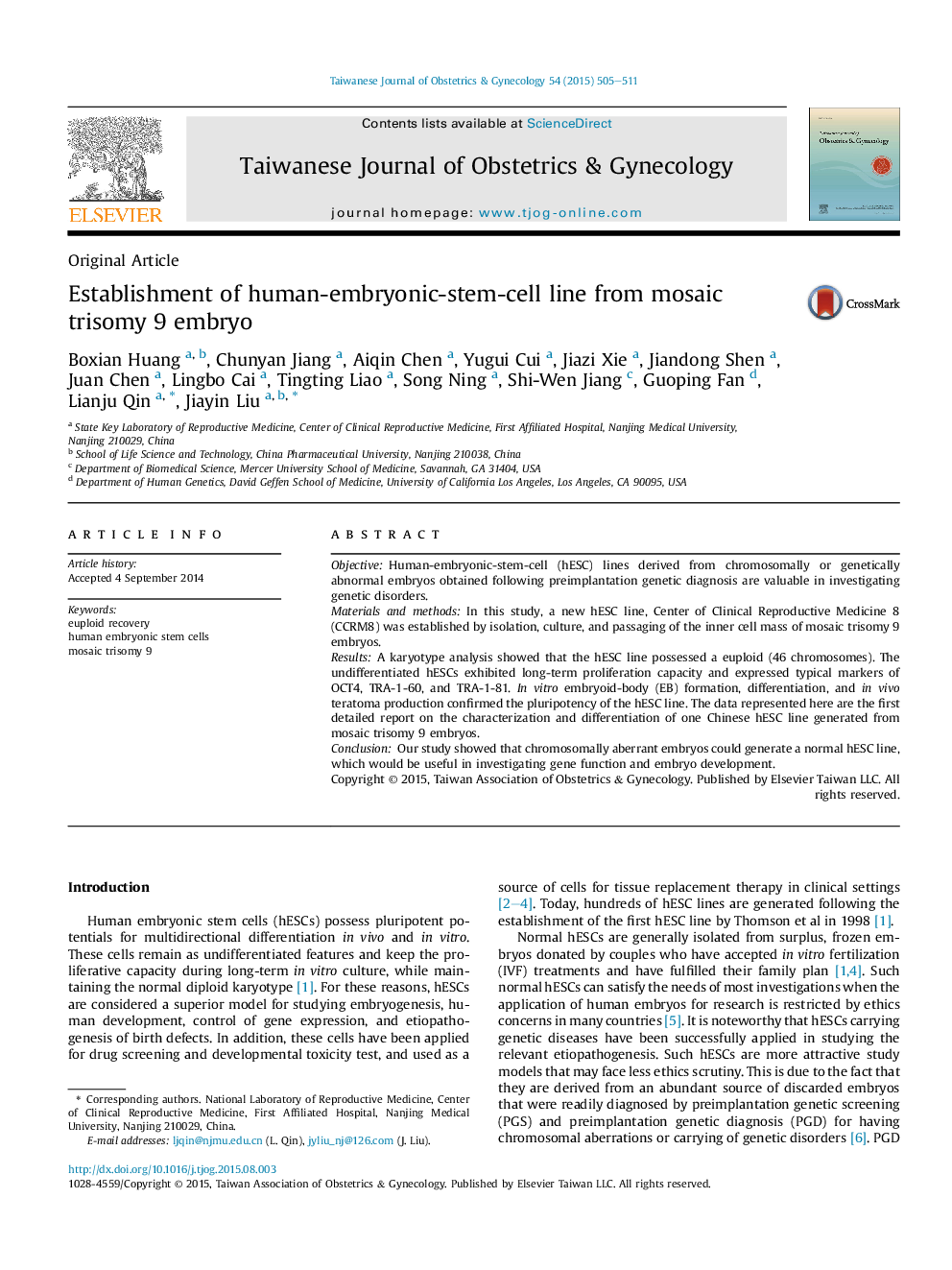| Article ID | Journal | Published Year | Pages | File Type |
|---|---|---|---|---|
| 3975468 | Taiwanese Journal of Obstetrics and Gynecology | 2015 | 7 Pages |
ObjectiveHuman-embryonic-stem-cell (hESC) lines derived from chromosomally or genetically abnormal embryos obtained following preimplantation genetic diagnosis are valuable in investigating genetic disorders.Materials and methodsIn this study, a new hESC line, Center of Clinical Reproductive Medicine 8 (CCRM8) was established by isolation, culture, and passaging of the inner cell mass of mosaic trisomy 9 embryos.ResultsA karyotype analysis showed that the hESC line possessed a euploid (46 chromosomes). The undifferentiated hESCs exhibited long-term proliferation capacity and expressed typical markers of OCT4, TRA-1-60, and TRA-1-81. In vitro embryoid-body (EB) formation, differentiation, and in vivo teratoma production confirmed the pluripotency of the hESC line. The data represented here are the first detailed report on the characterization and differentiation of one Chinese hESC line generated from mosaic trisomy 9 embryos.ConclusionOur study showed that chromosomally aberrant embryos could generate a normal hESC line, which would be useful in investigating gene function and embryo development.
